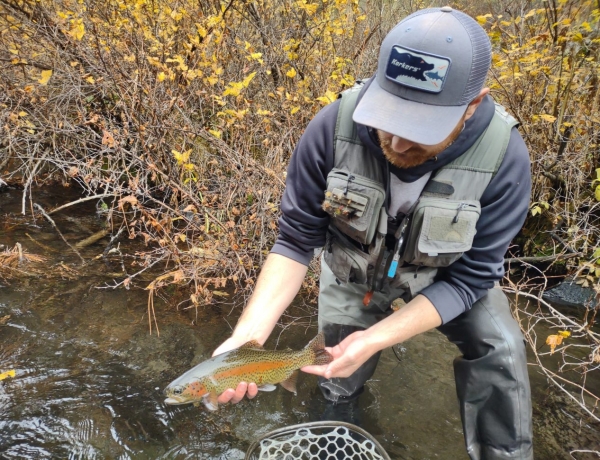Salmonflies! The biggest and clumsiest stonefly on earth arrives typically mid to late May on the lower Deschutes. Prior to the winged adults careening through the sky, their nymphs produce well all throughout the Deschutes. The middle Deschutes is also a good bet all month for stonefly action below or above the surface, and some tributary mouths on the Metolius can produce a very localized salmonfly hatch in May sometimes as well. The Deschutes and Crooked rivers will get a few caddis species, mostly in sizes 12-16 as the weather starts to warm in earnest. The Mother's Day caddis is the best hatch on the Crooked in terms of numbers of bugs, but it remains to be seen how that will pan out after the low water last year*. Green Drakes will be around on the Metolius and Deschutes towards the end of the month, but typically they're stronger in June. Nymphing can be lights out on either of these rivers with a stonefly nymph and simple dropper, such as a copper john or pheasant tail in sizes 12-20. Junk flies like san juan worms or cranefly larvae can be good on the Deschutes and Crooked as well, especially after a big thunderstorm/rain. The Fall and Metolius get PMDs, becoming more prevalent the warmer the weather gets. All stages of the bug are always important to have at these technically demanding rivers to truly match the hatch.
*the Crooked has been extremely high during May and mostly unfishable. Check the flows before you go here.
For the lakes, it once again depends greatly on water temperature and that will vary wherever you go. Damselfly and dragonfly nymphs will be active, and woolly buggers or your favorite variation can be quite effective. Balanced leeches can also produce well in lighter colors now that the damsels and dragonflies are a bit more active. Callibaetis should be revving up, but probably more so in the nymph and emerger stage than on top on any given day unless it gets substantially hot. When fishing lakes that have baitfish populations such as Paulina/East or Diamond lake, streamers can be very effective when stripped off of dropoffs or boulder gardens where fish like chubs or sculpin will spawn in the late spring. If you're looking to hike in to any high elevation lakes, it can be incredibly rewarding to be the first one there after ice off and some of our backcountry lakes have really nice fish in them. Packing in a float tube if it's entirely ice free is a great choice as well. Fly selection on those lakes shouldn't matter a whole lot but you can use mostly leeches and chironomids no matter what.


